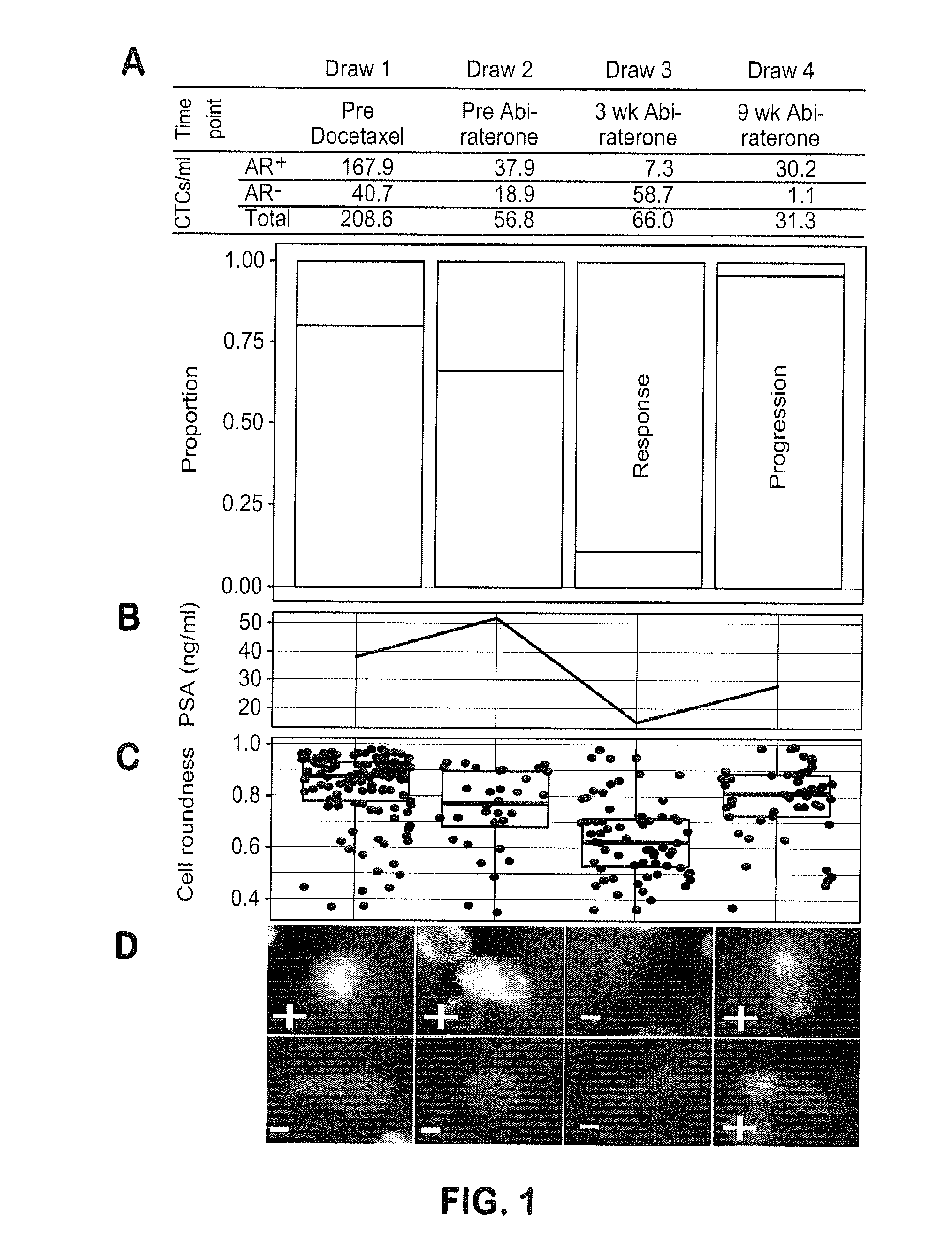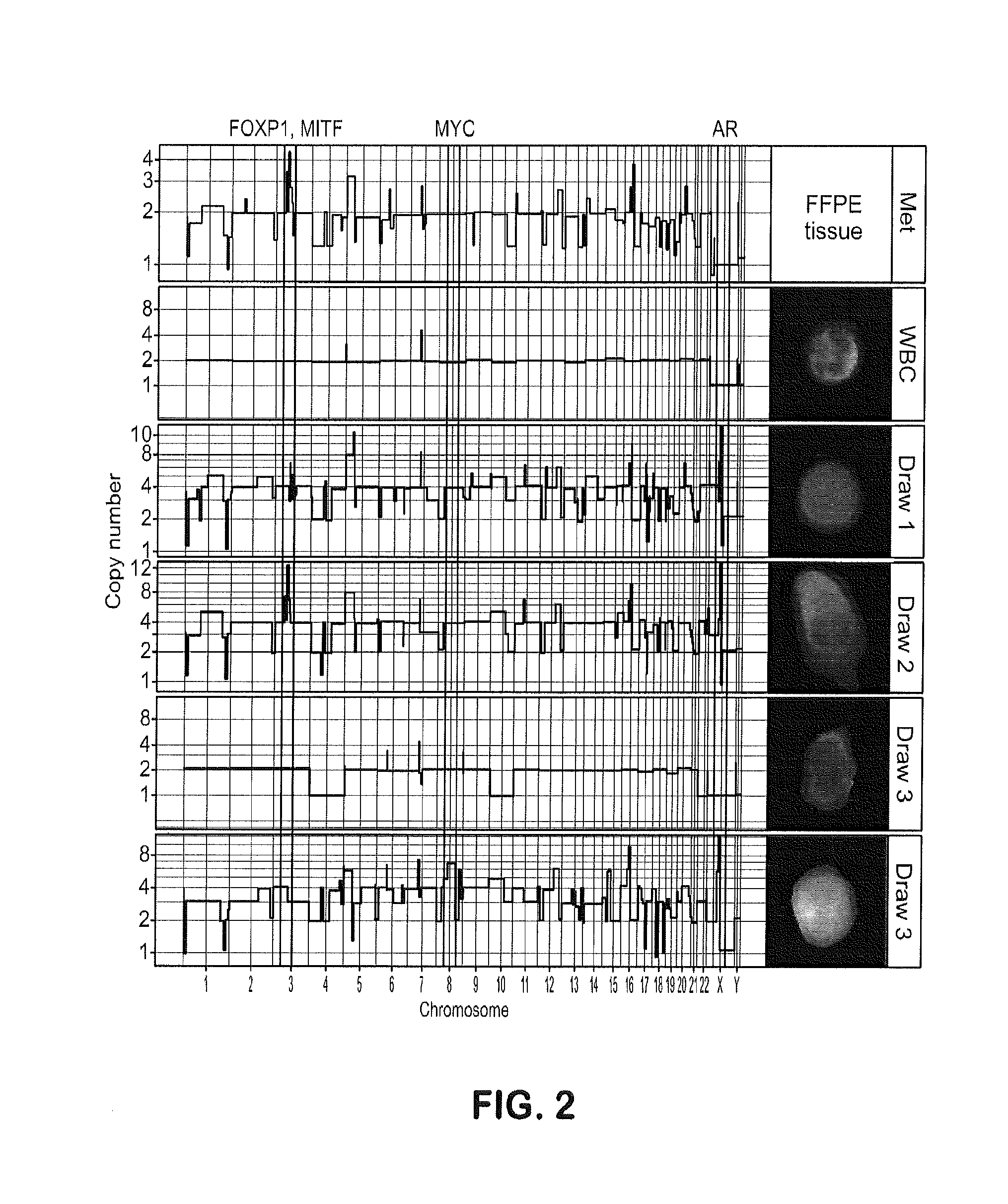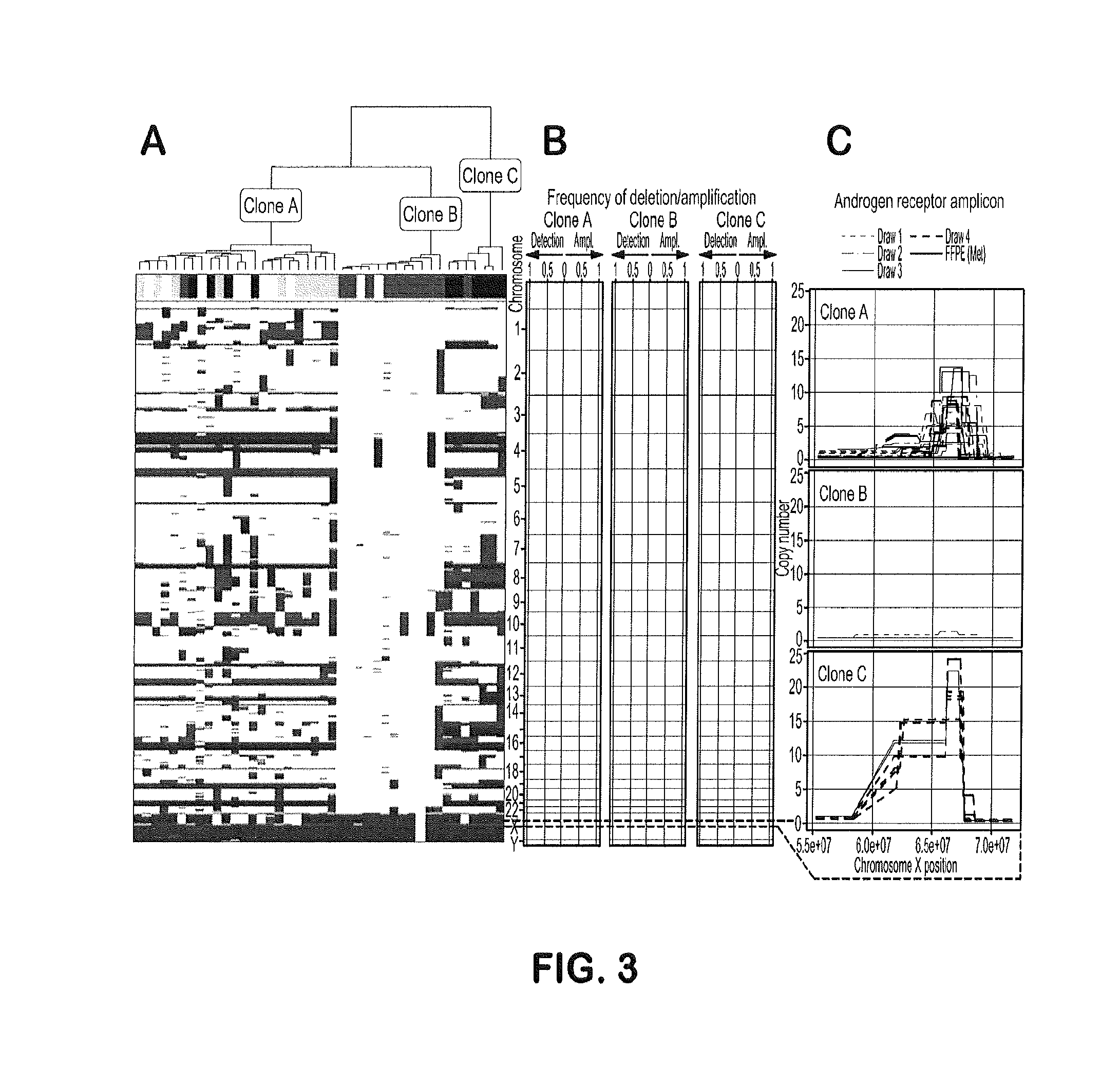Genotypic and Phenotypic Analysis of Circulating Tumor Cells to Monitor Tumor Evolution in Prostate Cancer Patients
a prostate cancer and tumor technology, applied in the field of genetypic and phenotypic analysis of circulating tumor cells to monitor tumor evolution in prostate cancer patients, can solve the problems of inability to predict the early indicators of therapy resistance, the treatment response is major, and the inability to cure the disease with poor prognosis, etc., to achieve the effect of improving the predictive capacity of this patient group, and improving the survival ra
- Summary
- Abstract
- Description
- Claims
- Application Information
AI Technical Summary
Benefits of technology
Problems solved by technology
Method used
Image
Examples
example 1
Rapid Phenotypic and Genomic Change in Response to Therapeutic Pressure in Prostate Cancer Detected by High Content Analysis of Single CTCs
[0096]This example shows monitoring of treatment response by longitudinal CTC molecular analysis and demonstrates that phenotypic and genotypic changes in circulating cell populations represent sequential steps of genetic evolution in response to a multi-step therapeutic regime culminating in treatment with abiraterone acetate
[0097]Patient Clinical History and Blood Draws Collected During Treatment.
[0098]The study was approved by the institutional review board (IRB) of University of Southern California Comprehensive Cancer Center. The patient provided written informed consent. The patient presented with PCa metastatic to a lumbar vertebrae at diagnosis for which the primary biopsy represents the first specimen in this study. Initial treatment consisted of androgen deprivation therapy (leuprolide acetate). After 5 months, there was clinical progre...
PUM
 Login to View More
Login to View More Abstract
Description
Claims
Application Information
 Login to View More
Login to View More - R&D
- Intellectual Property
- Life Sciences
- Materials
- Tech Scout
- Unparalleled Data Quality
- Higher Quality Content
- 60% Fewer Hallucinations
Browse by: Latest US Patents, China's latest patents, Technical Efficacy Thesaurus, Application Domain, Technology Topic, Popular Technical Reports.
© 2025 PatSnap. All rights reserved.Legal|Privacy policy|Modern Slavery Act Transparency Statement|Sitemap|About US| Contact US: help@patsnap.com



